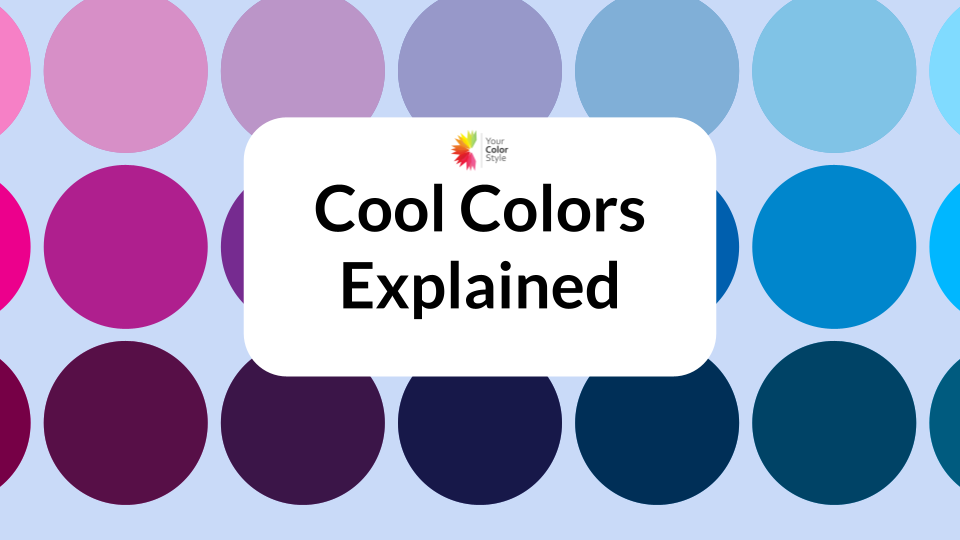🎨 Cool Colors Explained: The Science Behind Why They Flatter Cool Undertones

If warm colors make you look yellow or tired, your undertones might be cool. But what does that actually mean — and why do some shades just click with your coloring while others don’t?
In this video, Jen Vax from Your Color Style explains the color theory behind cool colors — and how understanding cyan, magenta, and the modern color wheel helps you choose the hues that make you glow.
💡 What Makes a Color Cool?
Cool colors are those made with cyan, one of the three modern primary colors: magenta, yellow, and cyan.
At Your Color Style, we use this modern color model because it reflects how color really behaves in light and pigment mixing.
When a color contains 50% or more cyan, it falls into the cool category. These hues include blues, blue-greens, teals, and cool pinks — all of which share cyan as their common component.
✳️ Color harmony tip:
Colors that share a similar base (in this case, cyan or blue) will always appear harmonious when worn together — especially on someone with cool undertones.
🎨 The Cool Side of the Color Wheel
If you look at the left half of the modern color wheel, that’s where all the cool colors live — from magenta through cyan to green.
-
Magenta + Cyan = Blue
-
Yellow + Cyan = Green
-
Cyan + Green = Teal or Turquoise
These combinations create the range of cool colors that are most flattering for people with cool undertones.
Even if your skin doesn’t look obviously “blue,” there’s usually a hint of coolness beneath the surface — pink, rosy, or slightly neutral with blue undertones. When you wear colors that contain cyan, they echo that same cool quality, creating balance and harmony.
👗 What Cool Colors Look Like in Real Life
-
Magenta and Fuchsia: Brilliant cool pinks that make cool undertones look radiant.
-
Sapphire Blue and Royal Blue: Pure cyan-based hues that bring clarity to your complexion.
-
Emerald and Teal: Cool greens that bridge cyan and green for a refreshing, oceanic feel.
-
Icy Pink and Lavender: Lighter tints that stay in harmony by keeping that cyan base.
When you wear these shades, they blend with your natural coloring instead of sitting on top of it. That’s what true color harmony feels like.
⚖️ Why Warm Colors Don’t Work as Well
Warm tones are built from yellow, not cyan. That’s why yellow-based reds and golden tones can make cool undertones appear sallow or tired. The warmth doesn’t match your natural cool base — it fights against it.
The key takeaway:
Stick with colors that have a blue or magenta influence rather than yellow or orange.
🧭 Want to Discover Your Color Type?
If you’re not sure whether you’re cool, warm, or olive — or what colors truly harmonize with your natural coloring — start here:
👉 Discover Your Color Type in 3 Steps
This free guide walks you through how to determine your depth, undertone, and chroma — the three steps of the Your Color Style system that reveal your most flattering color palette.
✨ Final Thought
Color theory isn’t just for artists — it’s the foundation of feeling confident in what you wear. Once you understand why colors behave the way they do, you’ll see your wardrobe (and yourself) in a whole new light.
- Posted in color wheel, home











